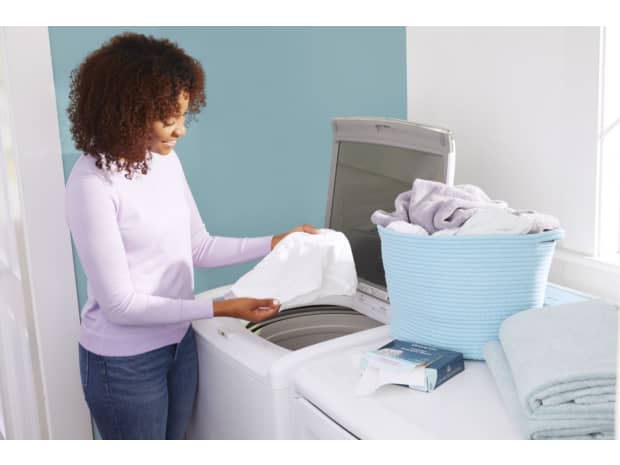
How to Wash Bed Sheets: The Complete Guide to Keeping Them Brand New
Washing your bed sheets once a week might seem like overkill — until you learn what’s lurking there. This guide will help you keep your sheets clean and fresh.
Read More


Last Updated: July 20, 2022
Laundry stripping is a trendy new cleaning technique that promises to banish the scuzz from your well-worn clothes. We tried it to see what the hype is all about.
You’ve seen the videos on TikTok. You’ve heard stories of grimy, scuzzy sheets that’ve been given new life. Now you’re left wondering, what is laundry stripping, and does it actually work?
Laundry stripping aims to remove all the built-up gunk from your clothes, towels, and bed sheets. Think of it as an exorcism for your fabrics, without the holy water and chanting (unless you want to!)
Me being me, I decided to strip laundry in the tub, which meant working in a hot, steamy bathroom while most of the country is in the vice grip of a heatwave. But cleanliness waits for no one, so I made an iced matcha and got to work. Stick around to see some great (disgusting?) before and after photos, and learn how to strip your laundry with three natural products.
Over time, the fabrics we use regularly soak in a lot of muck that sticks tight to their fibers, even after they’ve been washed. Laundry stripping is the process of removing that muck — like bodily oils, hard-water minerals, and residues from laundry detergents and softeners. Luckily, you only need three ingredients!
Borax, washing soda, and laundry detergent are the heroes of the laundry stripping saga. Just mix them together in hot water, and let your dirty duds soak until the water cools. Keep in mind that one thing laundry stripping can’t do is remove stains, so use a stain remover on your items before you strip them.
Laundry stripping is a fairly aggressive cleaning technique that you don’t want to go overboard with. Once your clothes, towels, and blankets start to look dull, dry, and stiff, it’s time to strip ‘em. You can strip your fabrics up to twice a year — maybe while you’re spring cleaning, and again in the fall.
GROVE CLEANING TIP
If you look at most of the laundry stripping tutorials on the web, you’ll notice a lot of people say you need to use Tide or other conventional cleaners in order for the stripping to work. I’m here to tell you that this is not true, and you can absolutely achieve incredible results using a plant-based laundry detergent.
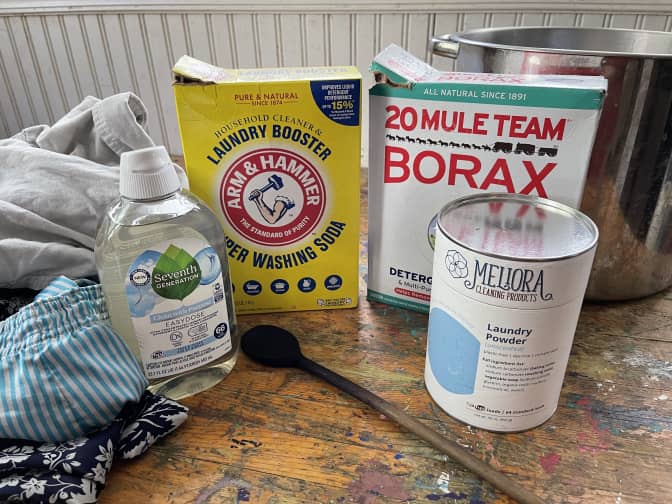
Fill your bathtub or container of choice with enough hot water to cover all the fabric you’ll put in it. I used hot water from the tap, so don’t feel like you have to boil water on the stove for this. Just make sure it’s steamy!
Once you’ve got your hot water, pour in the cleaners. I won’t lie — I didn’t measure when I stripped my laundry. The ratio of Borax to washing soda to laundry detergent is 1:1:2, so I eyeballed it. A hearty splash of Borax, and healthy pour of washing soda, and a solid slosh of detergent brings it all together nicely — but if you’re not one to trust your eyeballs, here are the measurements:
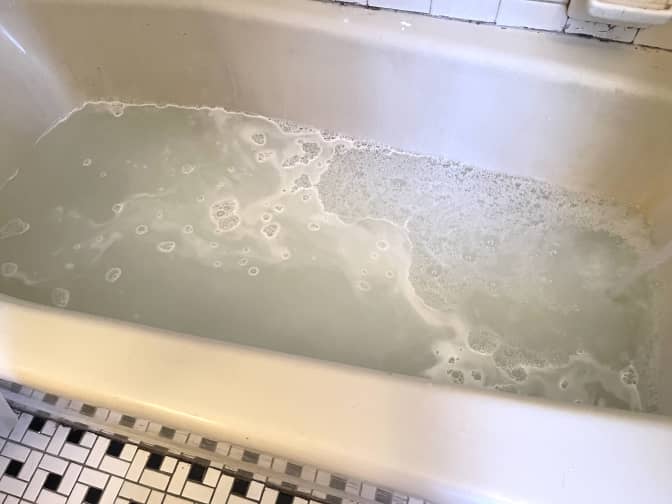
For a bathtub:
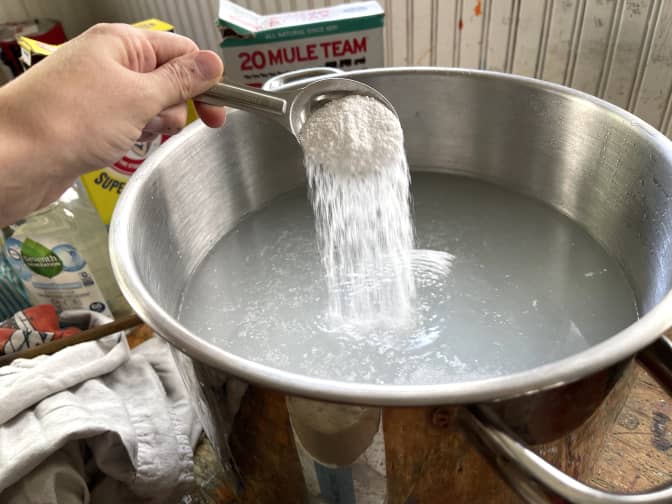
For a large pot:

I stripped my white clothes in a pot with Meliora Laundry Powder, and I did my colors in the tub with Seventh Generation Easy Dose. The idea is to let your fabrics soak until the water cools off, stirring and poking at them every once in a while to make sure they’re all fully submerged.
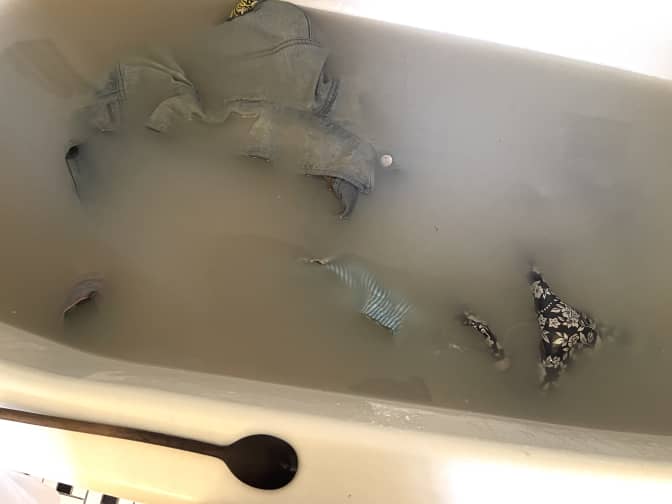
If you don’t have a utensil to stir with, you can use your (gloved!) hands. I was impatient and only waited three hours. I could’ve waited a couple more, until the water was completely cool. Still! Look at that water! Ew!
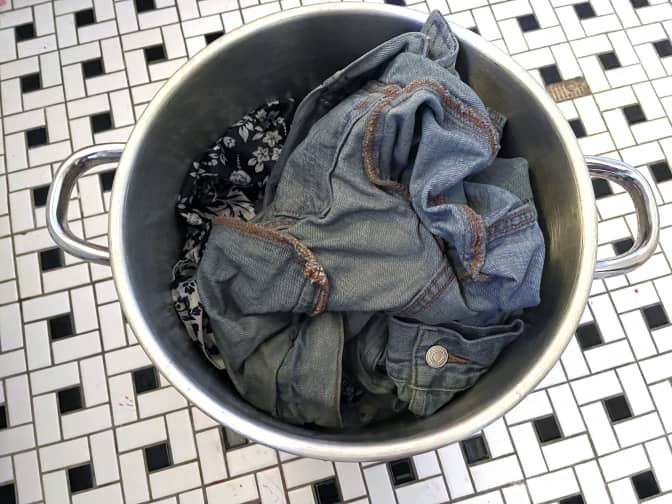
Drain the icky, nasty water and gently squeeze your fabrics so they’re not sopping wet anymore. I highly recommend gloves for this. Once they’re all wrung out, dump them in the washer, then wash and dry as usual. Even if you’re a cold water laundry devotee, consider using a warm water cycle to make sure you get all the laundry stripping solution out.
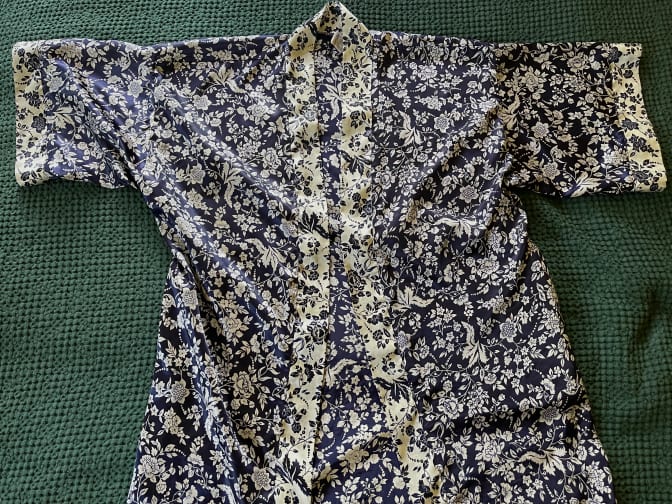
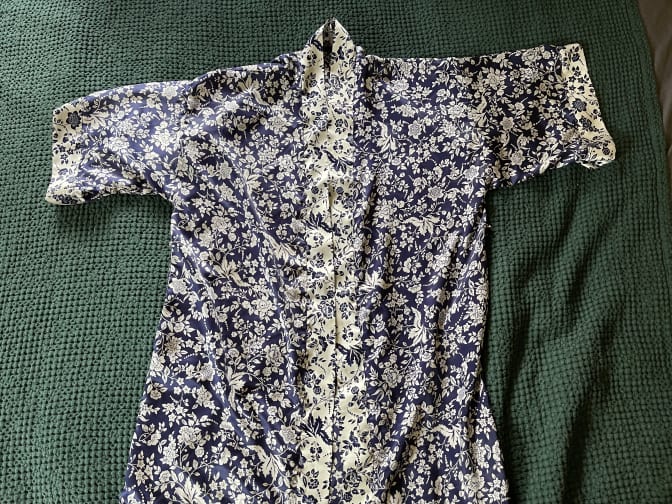

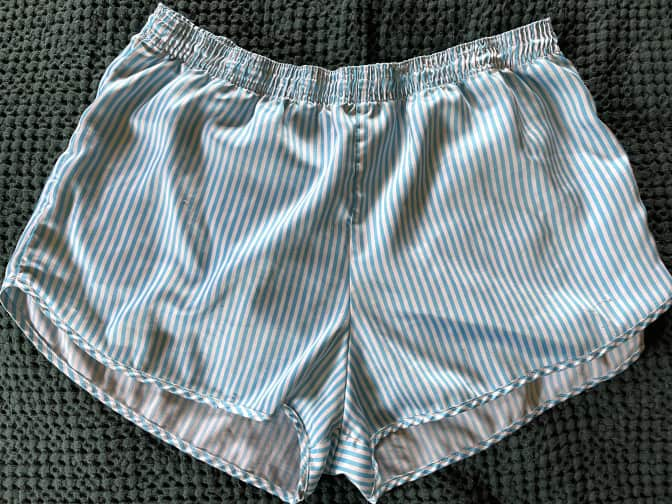
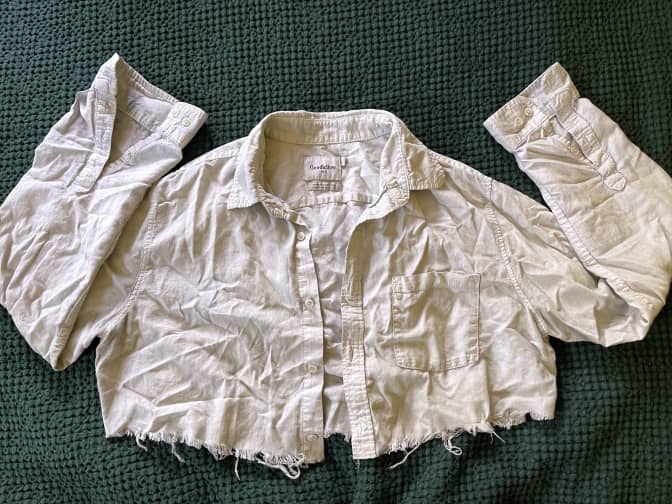
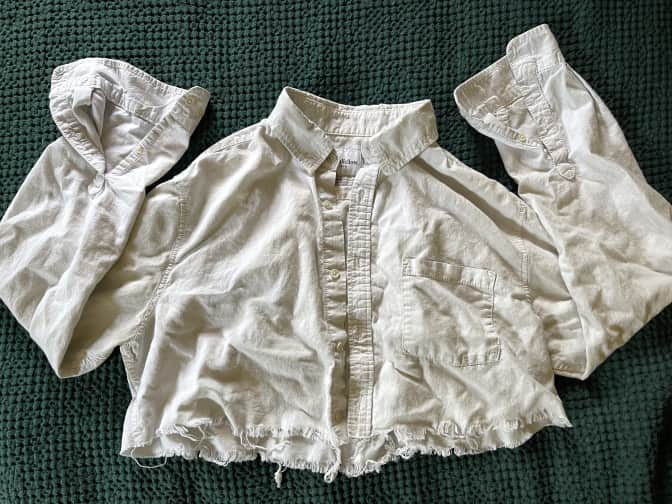
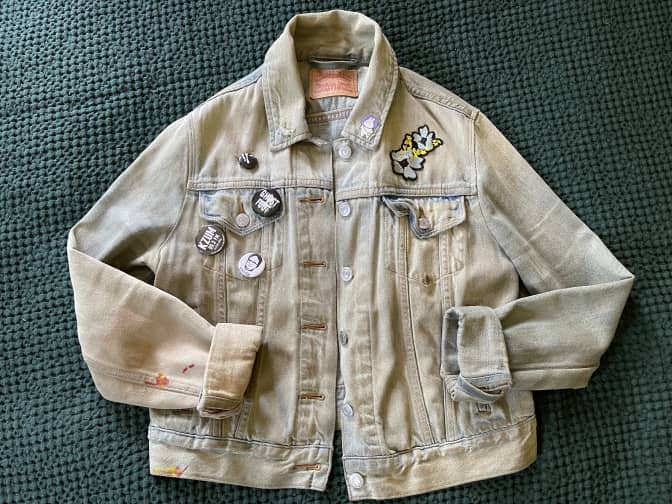

The results speak for themselves, don’t they? My jean jacket in particular was so gross. Since it has patches on it, I rarely wash it — and even here, I hand washed it after laundry stripping and hung it to dry.
And my robe! I slather my bod in coconut oil post-shower, and it has a tendency to seep into the satin and stick. No amount of conventional washing will make the dull grey flowers silver again, but the laundry stripping definitely took care of it — and there wasn’t any color fading on any of my clothes.
I didn’t notice a difference between the items stripped with powdered detergent vs. the items stripped with liquid detergent. The stuff in the tub was definitely dirtier, which is why the water is more disgusting. I really don’t think the type of detergent you use matters — it’s just there for a lil’ extra cleaning power. The real superstars are the Borax and washing soda.
Don’t use the laundry stripping technique on delicate items like vintage clothes, lingerie, items that aren’t colorfast (the dye will fade or wash out in hot water), and items that can’t be washed in hot water. I’d also advise against stripping handknits or gauzy cotton. For tips on cleaning your sweet vintage finds, check out Grove’s guide to washing vintage and secondhand clothes.
Even if your clothes are colorfast, it’s best to strip light clothes and dark clothes separately. Laundry stripping can be pretty intense, and you don’t want to risk accidentally dying your white blouse blue because you stripped it with your jeans.
Laundry stripping can fade your clothes, although I’ve laundry stripped a few times and haven’t had this happen yet. If you’re worried about a particular item fading, play it safe, and don’t strip it. Or, walk on the wild side, and see what happens.

Washing your bed sheets once a week might seem like overkill — until you learn what’s lurking there. This guide will help you keep your sheets clean and fresh.

To attack sweat stains and get them out completely, follow these steps using natural products.

Keep your child’s favorite plush friends looking new for longer by learning how to safely wash stuffed animals both in the washing machine and by hand.
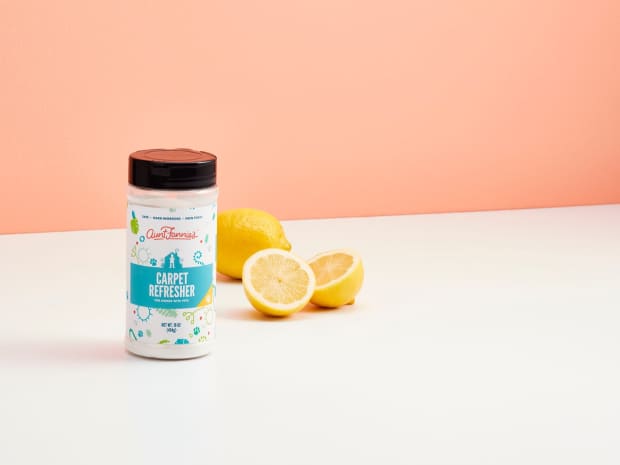
Tired of funky, musty smells coming from your carpets or rugs? Learn how to deodorize carpet with natural powders and sprays — and when to use which.